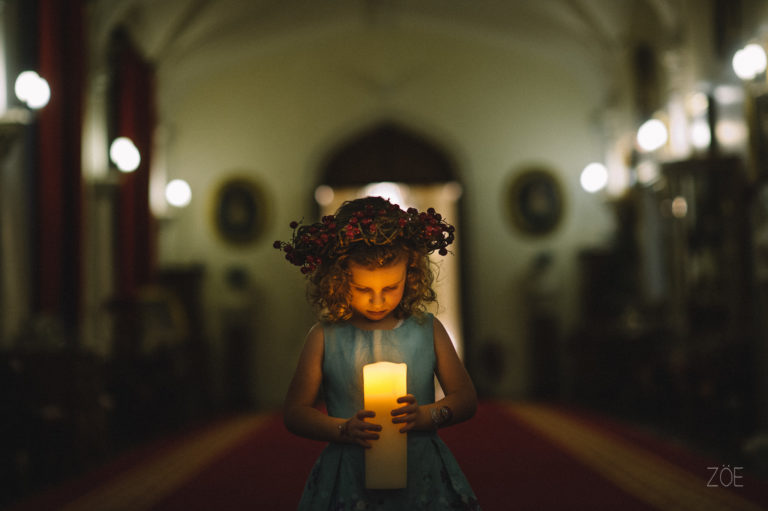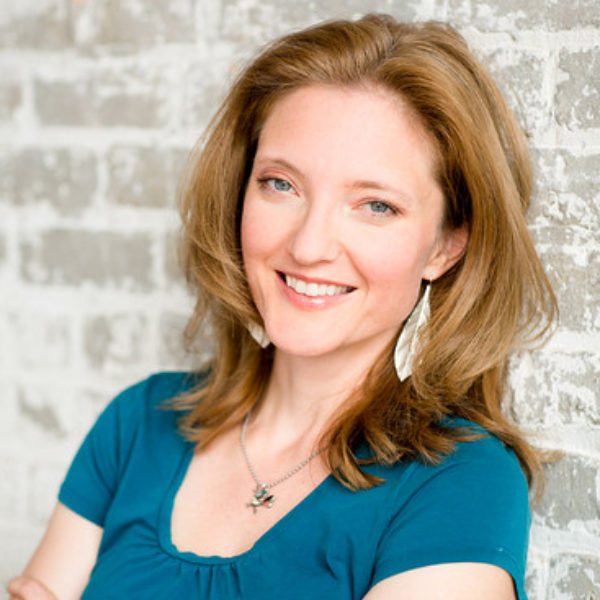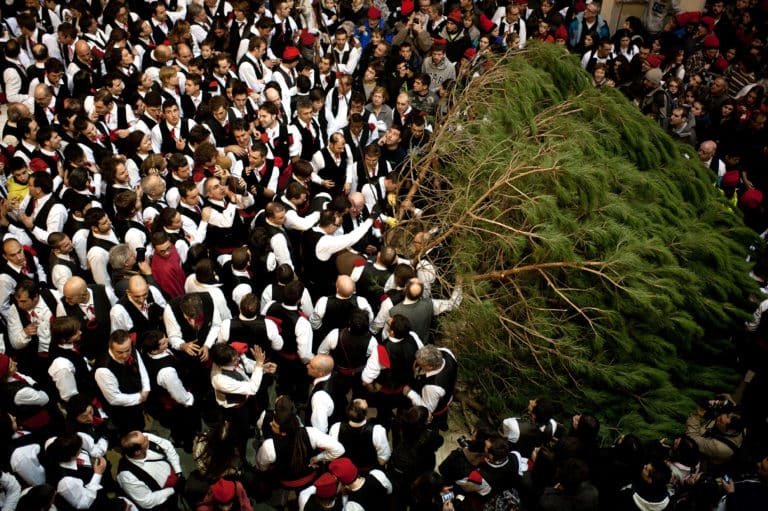
A young girl holds a candle at Christmas time at Scone Palace. Image by Zöe Barrie/Flickr, Some Rights Reserved.
The Shoulder Season of Advent
My father is a Lutheran pastor, and to me Christmas is chaos.
The few days leading up to Christmas Eve were full of stress-packed activity: rehearsals, performances, multiple services, late nights. The list was long and time felt thin and brittle. We ran headlong into Christmas, like kids who get going downhill and don’t know how to control their speed.
On Christmas Eve, between the 7 and 11 pm services, long after dark, we’d gather around our tree to open presents, yawning and trying not to fall asleep before driving back to church for the midnight mass. Christmas had its own adrenaline-fueled excitement, for sure, and I honestly don’t remember resenting it at the time — and I don’t now. It was just what we did. But it rarely felt reverent and never felt restful.
Christmas is the extrovert of the church calendar (along with Easter, of course).
It’s social and busy. It’s loud and flashy and well-fed and adorned. It’s beautiful and charismatic, and has the most wonderful story to tell. People often talk about wanting a more peaceful Christmas, but, in the end, its call to come and join the party is a tough one to turn down. Christmas is the guest everyone is eagerly watching for. We’re looking out the window, checking our watches, squealing with glee, and clamoring to the door as it finally pulls into the driveway. It’s here! It’s here!
Maybe this is why I have always loved the shoulder seasons of the church, and Advent in particular. It is an introvert’s season.
Advent is expectant and full of hope. There’s also a solemn quality to the waiting — not dour or dreary — something grounded and okay with a close stillness, a quality that honors the waiting itself as sacred.
It is a patient season. It asks us to be patient, too. Advent asks us to make peace with the lingering and reminds us that we can. It gently shows us again that there can be deep joy in that in-between place, that one-foot-in-front-of-the-other pace.
Certainly there is room for both the celebratory and the subdued. I just find that when Advent rolls around my heart is so hungry for that deliberate quieting in the midst of the noise.
The church in 21st-century America does a lot of talking. Advent resets the church as a space for holy listening, something that it desperately needs more of. The church does a lot of deciding and declaring. Advent calls us to reflect on the profound power of being, even — perhaps especially — when we don’t have all the answers.
How can I be a space — simple, open, warm, stilled — that is prepared to receive the smallest, humblest, most vulnerable version of divinity when it comes quietly knocking at my door? Can I welcome a God I don’t recognize at first, a God who shows up in rags, comes from another country, and is dependent on my meager shelter? Am I brave enough for that?
With two young girls, we’re starting to forge our own Advent traditions. There’s not a lot of pomp; trying to decode Scriptural complexities with an almost three year old (or a 39 year old, for that matter) can sort of miss the point, especially at at a time when the most basic messages are actually the most profound and true.
We light candles in the early dark, sing songs, talk about the “never stopping, never giving up, unbreaking, always and forever love” of God that we read about in The Jesus Storybook Bible. We ask God for new eyes to see the miracle that intentionally makes its home in the midst of our daily mess.
Last night, Stella — the youngest, loudest, and most kinetic person in our family — sat mesmerized by the candle flame. It lit a soft warm circle around her face and hands, slowly bowing back and forth. She stared, in a rare moment of silence, then smiled. “Look,” she said, wonder-drenched and wise: “It’s reaching for me. The light is trying to reach me.”


Share your reflection